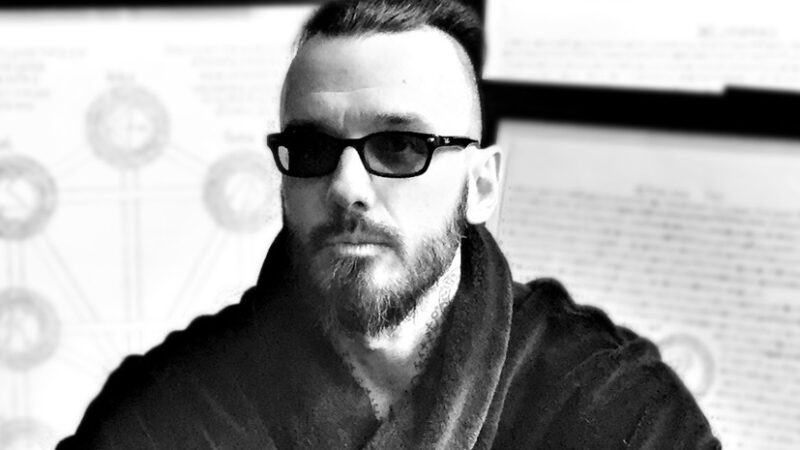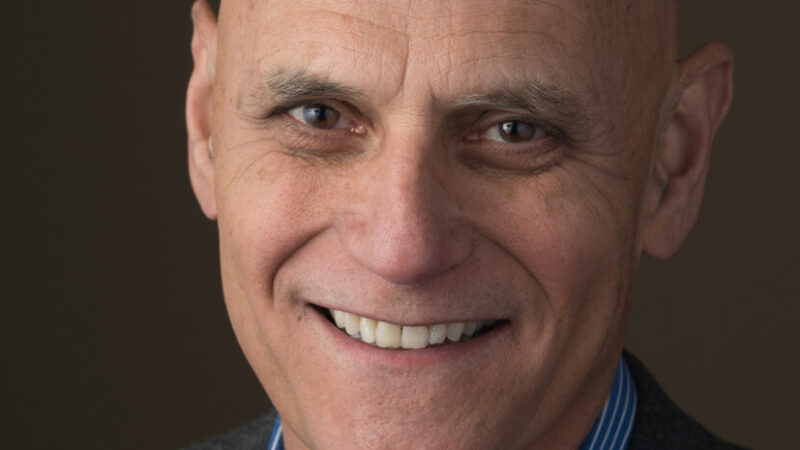-
E117: The Real Work: Letting Go from Within
Michael Singer — October 2, 2025
True spirituality isn’t about mystical experiences or lofty ideals—it’s about honestly facing...
-
Once More: Reflections on Reincarnation and the Gap Between Lives
Tami Simon — September 26, 2025
In this special reflection episode of Insights at the Edge host Tami Simon looks back on her...
-
Honey Tasting Meditation: Build Your Relationship with Sweetness
There is a saying that goes “hurt people hurt people.” I believe this to be true. We have been...
Written by:
Amy Burtaine, Michelle Cassandra Johnson
-
Many Voices, One Journey
The Sounds True Blog
Insights, reflections, and practices from Sounds True teachers, authors, staff, and more. Have a look—to find some inspiration and wisdom for uplifting your day.
Standing Together, and Stepping Up
Written By:
Tami Simon -
The Michael Singer Podcast
Your Highest Intention: Self-Realization
Michael Singer discusses intention—"perhaps the deepest thing we can talk about"—and the path to self-realization.
This Week:
E116: Doing the Best You Can: The Path to Liberation -
Many Voices, One Journey
The Sounds True Blog
Insights, reflections, and practices from Sounds True teachers, authors, staff, and more. Have a look—to find some inspiration and wisdom for uplifting your day.
Take Your Inner Child on Playdates
Written By:
Megan Sherer
600 Podcasts and Counting...
Subscribe to Insights at the Edge to hear all of Tami's interviews (transcripts available, too!), featuring Eckhart Tolle, Caroline Myss, Tara Brach, Jack Kornfield, Adyashanti, and many more.
Most Recent
Damien Echols: We Are Unconscious Angels
Damien Echols is an author and artist who teaches classes on magick around the country. The story of his wrongful murder conviction was documented in the films Paradise Lost and West of Memphis. With Sounds True, Damien has published the book High Magick and the complementary audio program A Course in High Magick. In this podcast, Sounds True founder Tami Simon speaks with Damien about his forthcoming book, Angels and Archangels,which offers us a practical set of tools for working with these timeless forces for divine wisdom and healing power.
Steven Hayes PhD: Self-Acceptance and Perspective-Taki...
Steven Hayes is a professor, the chair of the Department of Psychology at the University of Nevada, and the author of more than 35 books and 500 scientific articles. The cofounder of the acclaimed Acceptance and Commitment Therapy (known as ACT), Steven is a contributor to the Sounds True book The Self Acceptance Project: How to Be Kind and Compassionate Toward Yourself in Any Situation and the author of the Sounds True audio program Acceptance and Commitment Theory. In this episode of Insights of the Edge—which previously aired as part of an interview series on self-acceptance—Tami Simon and Steven discuss his experiences living with a panic disorder at a young age, and how his own bouts with anxiety shaped his clinical studies. They talk about the practice of perspective-taking and how it can be a powerful bulwark against self-recrimination. Finally, Steven offers his perspective on spirituality and how that perspective informs the core tenets of Acceptance and Commitment Therapy.
Heidi Smith: Bringing People to the Flowers
Heidi Smith is a psychosomatic therapist, flower essence practitioner, and registered herbalist. She is the author of The Bloom Book: A Flower Essence Guide to Cosmic Balance, a comprehensive guide for working with flower essences in order to bring about healing, transformation, and awakening, at both a personal and collective level. Heidi is Tami Simon’s guest in “Bringing People to the Flowers,” a podcast exploring humanity’s call to enter into a deeper relationship with flowers. Heidi and Tami also discuss flower essences as a “verbal and vibrational” medicine, the power of intention, how to begin working with flower essences yourself, and much more.
Customer Favorites
Mothering and Daughtering
Tami Simon speaks with Sil and Eliza Reynolds, a mother-daughter team who are leading a revolution to overturn the conventional wisdom that creates rifts between so many mothers and daughters. Sil is a therapist in private practice, while Eliza is a student at Brown University. With Sounds True, they have co-authored a new book, Mothering and Daughtering: Keeping Your Bond Strong Through the Teen Years. In this episode, Tami speaks with Sil and Eliza about ways we can heal the mother-daughter bond especially during the difficult teen years, the essential tools that both mothers and daughters need, and what it means for mothers and daughters at any age to “keep it real.” (66 minutes)
Seth Godin: Taking the Leap
Seth Godin is a bestselling author and popular blogger who is known for his writing on marketing, the spread of ideas, and mindful business strategies. In this episode, Tami Simon and Seth discuss the concept of resistance and how it must be sought out in any effective pursuit of art. They also talk about the contemporary “connection economy” and how there is no guarantee that one can make a living through genuine self-expression—but also how one should do so anyway. Finally, they spoke on the necessity of taking leaps and Seth’s concept of living a life of faith. (62 minutes)
Inspiration: 27 Vital Aspects of Breath

Have you ever paused to consider how amazing your breath is? Here’s a list of some inspirational aspects of breath. (The word inspiration itself means to breathe.) Some might already be familiar to you. You may feel drawn to appreciate some more than others. Devoting close attention to any one will lead to all the others. It’s all there – in a breath.
1 Present-ness
My mind wanders. My thoughts drift off. Sometimes, I could drown in regret, lost reviewing the past. Meanwhile, my breath is always precisely in the present moment.
2 Happiness
When we drop our worries and hurries, we can fully connect with our aliveness. Breathing with this joy on our lips, we learn a deeper, more enduring happiness. It’s our birthright. Conscious breathing can be a great relief, having nothing else to do but be – and a reminder there are enough simple reasons for happiness in this present moment.
3 Leadership
I’m a follower of my breath. Following my breath can tell me volumes about how I’m feeling and what I’m thinking; where I am and where I need to go in my life. When I notice my mind has wandered – I simply draw attention back to my breath.
4 Constant Companion
Since my birth, no one and no thing has been as close to me, without fail, rain or shine, as my breath. No sensation has been as familiar to me. When I follow my breath, I feel myself coming home, where I’ve always belonged.
5 Best Friendship
Ultimately, no one may love me as much as I do. To remain faithful to my part of the relationship, I pay utmost attention to my breath. Sometimes, I need to take time for us to get to know each other better.
6 Relational
I say, “my breath,” but I could b breathing in your out-breath. The simple implication of breath’s merging of within and around can dramatically shift my perspective.
7 Inspirational
We have many muses in our creative life. They may take the form of rituals, people, or substances. My primary inspiration is breath.
8 Nature
Through my breath, I observe my connection to Nature and her processes. The in-and-out of breath mirrors the natural cycles – the tides, the sun and moon, life and death.
9 Slowness
Nature reminds me to slow down, since my observation reveals how slowness tends to predominate our surroundings. Paying attention to breathing, it tends to deepen and slow, of its own, naturally. Living in a culture addicted to an ever-accelerating pace, slowness can feel like salvation.
10 Calm
Paying attention to breath allows it become as deep as it wishes to be. When I feel my belly soften and breath grow deep, my vestigial instincts of flight-fright-or-fight have gone away: less stress! I am aware of how calm I feel.
11 Solidity
Without calm, my strength can dissipate, disperse, and scatter. Without calm, I cannot engage in gentle inquiry into the nature of self and reality. My reserve of calm assures my presence has solidity, even in emergency. I can show up, and be present when I show up.
12 Silent
Paying attention, I notice breath is slower than thought. Nor does it obey the restrictive patterns of verbal language. I pay close attention to each quiet breath, from beginning, middle, and end – and with a blank space, in between. This silence is not blind.
13 Anonymity
My breath is totally unconcerned whether or not I am up with latest fashion, or what I look like. I don’t need to cultivate an identity. Breath accepts as I am. In that complete acceptance, I could be nobody – or anybody. This is anonymity is a passport to the undomesticated world of the wild.
14 Impermanence
Breath is a living example of the impermanence of all things – a reminder of the importance of flow. You can never breathe the same breath twice.
15 Focus of Awareness
Meditating, I could focus on sound, which is also ever-present, but I like breath best.
16 Emotional Self-Regulation
Being intimate with how a breath arises, manifests, then falls away is a transferable skill, applicable to emotions and thoughts. These too arise, take form, and pass. Besides my recognizing they’re impermanent, it’s great to also be able to catch negative thought forms and destructive feelings at their inception – before they’ve pulled us along by the nose – learning to step away from their pull on us, understand them, and heal and transform their energies.
17 Direct
Breath isn’t symbolic nor abstract. There’s no need to look behind breath, searching for hidden meaning. Beyond anyone else’s words or labels, connecting with breath is to see for one’s self, through direct experience.
18 Intentionality
Wanting to change my behavior – my thoughts, my words, and my deeds – conscious breathing is wonderful training. To be conscious of just one breath immediately sets intention into motion. Conscious breath provides a space where I can consider how to respond, rather than react.
19 Universal
Like the wind that encircles the planet, breath is everywhere. It knows no religious denominations, national boundaries, ethnic differences, or social classes. Languages vary but they all tend to point to the vital connection to life of breath.
20 Vital
Mindful of breath, I return my attention to the fountain of life. Dead people don’t breathe. Many languages equate our personal breath with a connection to something greater than ourselves.
21 Centering
Shunryu Suzuki Roshi once likened breath to a hinge between mind and body. In present-moment awareness of breath, my body and mind find each other. In the vital spaciousness of breath, body mind spirit can align as one.
22 Interconnection
Scientists tell me my breath nourishes the green world of vegetation, and vegetation nourishes my breath. I know, first-hand, such interdependent interconnection of all things through my breath. I can feel how body conditions mind … mind conditions body … breath conditions both.
23 Letting Go
Breathing out teaches me a central lesson: letting go. I can’t breathe in without breathing out.
24 Ineffable
Breath is invisible. It has no color, no shape. It’s invisible. Breath – like mind, like life – is ineffable.
25 Selflessness
Breathing out, I let my exhalation simply fall away from my body, as if as far as to the horizon. Then I wait. I am as still as a hunter waiting for a deer. I don’t summon it, nor try to will it into existence. My next breath comes, nevertheless. As if of itself. Without fixed identity, lacking any separateness, empty of ownership. In this, it is perfectly open to anything and everything, as limitless as a big clear sky. Selfless.
26 Prayer
Mindful breathing can be a form of prayer.
27 Engaged
Breath can’t be confined to a monastery. It’s actively engaged in the world.
 Gary Gach hosts Zen Mindfulness Fellowship weekly in San Francisco, since 2009. He’s author of The Complete Idiot’s Guide to Buddhism and editor of What Book!? ~ Buddha Poems from Beat to Hiphop. His most recent book is PAUSE BREATHE SMILE ~ Awakening Mindfulness When Meditation Is Not Enough. This brings mindfulness full-circle, back to its roots as a spiritual as well as secular path for complete awakening. It’s available in both paperback and as an audio book. His work has also appeared in over 150 periodicals and a couple dozen anthologies, including The Christian Science Monitor, Harvard Divinity Bulletin, Huffington Post, In These Times, Language for a New Century, The Nation, The New Yorker, Technicians of the Sacred, and Yoga Journal. More info : GaryGach.com.
Gary Gach hosts Zen Mindfulness Fellowship weekly in San Francisco, since 2009. He’s author of The Complete Idiot’s Guide to Buddhism and editor of What Book!? ~ Buddha Poems from Beat to Hiphop. His most recent book is PAUSE BREATHE SMILE ~ Awakening Mindfulness When Meditation Is Not Enough. This brings mindfulness full-circle, back to its roots as a spiritual as well as secular path for complete awakening. It’s available in both paperback and as an audio book. His work has also appeared in over 150 periodicals and a couple dozen anthologies, including The Christian Science Monitor, Harvard Divinity Bulletin, Huffington Post, In These Times, Language for a New Century, The Nation, The New Yorker, Technicians of the Sacred, and Yoga Journal. More info : GaryGach.com.
Buy your copy of PAUSE, BREATHE, SMILE at your favorite bookseller!
Sounds True | Amazon | Barnes & Noble | Indiebound
Copyright © 2019 by Gary Gach.





